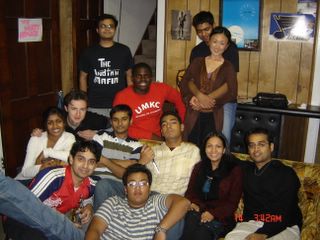work stuff
1.2.1 Web application framework
Alternative A: Java Server Face.
Alternative B: Struts
JavaServer Faces is the framework for building user interface components in web applications. It focuses on the view tier of a Model-View-Controller architecture, while providing enough controller capability to write simple to moderately complex applications.
Jakarta Struts is an open-source framework for developing J2EE web applications. It uses and extends the Java Servlet API to encourage developers to adopt an MVC architecture.
1.2.2 View Implementation
Alternative A: JSP
Alternative B: XSLT
Java Server Pages (JSP) technology provides a simplified, fast way to create dynamic web content by embedding Java code with HTML. JSP technology enables rapid development of web-based applications that are server and platform-independent.
XSLT is a functional language designed to perform transformations on XML documents. The JavaBean which contains the dynamic data can be serialized to XML and then transformed to HTML using the XSLT template, which contains the look & feel for the XML document.
1.3 Communication to application clients
According to the business requirement 4.1.2, the customer should be able to access their Order Status information via mySBC’s Check Order Status Tab. A communication interface should be designed for application clients, like mySBC, (SWOT, and PRM in the future) to communicate with COS.
Alternative A: EJB (Enterprise JavaBean)
Alternative B: Web Services
Alternative C: JMS
The Enterprise JavaBean architecture is a server component architecture for the development and deployment of component-based distributed business applications. The client application can easily invoke the EJB business method using a EJB client proxy obtained through a JNDI look up. The communication between EJB and its client occurs over RMI/IIOP.
Alternative A: Java Server Face.
Alternative B: Struts
JavaServer Faces is the framework for building user interface components in web applications. It focuses on the view tier of a Model-View-Controller architecture, while providing enough controller capability to write simple to moderately complex applications.
Jakarta Struts is an open-source framework for developing J2EE web applications. It uses and extends the Java Servlet API to encourage developers to adopt an MVC architecture.
1.2.2 View Implementation
Alternative A: JSP
Alternative B: XSLT
Java Server Pages (JSP) technology provides a simplified, fast way to create dynamic web content by embedding Java code with HTML. JSP technology enables rapid development of web-based applications that are server and platform-independent.
XSLT is a functional language designed to perform transformations on XML documents. The JavaBean which contains the dynamic data can be serialized to XML and then transformed to HTML using the XSLT template, which contains the look & feel for the XML document.
1.3 Communication to application clients
According to the business requirement 4.1.2, the customer should be able to access their Order Status information via mySBC’s Check Order Status Tab. A communication interface should be designed for application clients, like mySBC, (SWOT, and PRM in the future) to communicate with COS.
Alternative A: EJB (Enterprise JavaBean)
Alternative B: Web Services
Alternative C: JMS
The Enterprise JavaBean architecture is a server component architecture for the development and deployment of component-based distributed business applications. The client application can easily invoke the EJB business method using a EJB client proxy obtained through a JNDI look up. The communication between EJB and its client occurs over RMI/IIOP.


1 Comments:
wow... okay... do i know about any of this stuff? >.<
Post a Comment
<< Home